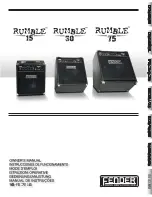
AMI Analyzer Manual
Communications
••••
36
if you do it on the next day or later, it will regard the latest calibration as a new one, and roll the previous
one down to the previous record. It stores in this way five calibrations.
This means that if you attempt to calibrate the unit, but can’t, so you replace the sensor and do it again on
the same day, the analyzer will only record the latest calibration of the new sensor.
Data Logging
Figure 9. User interface datalog chart
The program shows what the analyzer thinks is the current time and date, and also what your computer
thinks is the current time and date. You can send the computer time and date to the analyzer by clicking on
the “Set Analyzer Time” button. If you change the time and date, you may want to click the Clear Data
button so the software doesn’t get confused by later times being earlier than earlier times!
The analyzer logs data at a rate set by the “Datalog Interval” box. If this is set to zero, logging will actually
occur at ten second intervals. Typically this interval will be set to 1 minute. The unit is capable of storing
about 21000 data points, corresponding in this case to 21000 minutes, or rather more than 14 days. Setting
the interval to 4 minutes will allow it to store over two months of data. The oxygen reading is averaged for
the logging period, and stored as a percentage of the current output range, with a resolution of 1% of the
output range. If the reading goes above the output range limit, it will be stored as a percentage of the next
















































